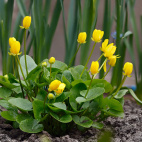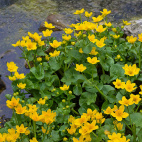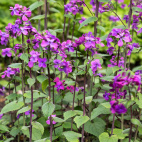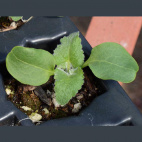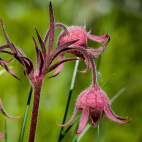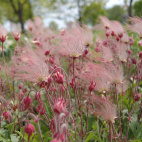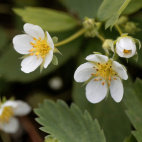Color
Availability
USDA Zone
Region
Type
Duration
Season
Germination
Soil
Sunlight
Height
Use
Narrow Your Search
Color
Availability
USDA Zone
Region
Type
Duration
Season
Germination
Soil
Sunlight
Height
Use
Wildflower Seeds - California Region
The wildflower species listed in the California Region are those that would grow well in the Central Valley as well as the coastal areas of Southern California. If you are in the mountains you might want to check out the Mountain Region, or if you are in the desert areas in the south, you'll want to look at the Dry West Region. The species of bulk wildflowers listed on this page are those that are either native here, or are annuals that grow well in this zone. There are hundreds of bulk California wildflower seeds to choose from, so please use the filters along the left side of the screen to narrow your search to match your soils, lighting, and any other attributes that you may want. If you are looking for something that is strictly native to your immediate area, you can check out the distribution map that is found on the detail pages of most of the species.
-
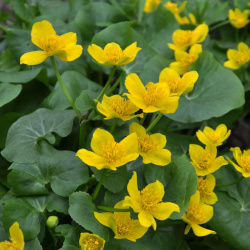 Store in the FridgeOut Of Stock
Marsh Marigold Seeds
Caltha palustris
Traditionally known as cowslips or kingcups, marsh marigolds often bring the first spring color to their native marsh. Thriving in bogs and swamps, they also make a lovely addition to a water garden.Quick View$3.75 Pkt - $200.00 / Oz
Store in the FridgeOut Of Stock
Marsh Marigold Seeds
Caltha palustris
Traditionally known as cowslips or kingcups, marsh marigolds often bring the first spring color to their native marsh. Thriving in bogs and swamps, they also make a lovely addition to a water garden.Quick View$3.75 Pkt - $200.00 / Oz -
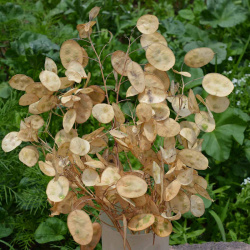 Money Plant Seeds
Lunaria biennis
Money may not grow on trees, but it does grow on wildflowers! Also known as Honesty, Moonflower, and Silver Pennies, these silvery translucent seedpods have been popular in dried flower arrangements since Colonial times. The fragrant lavender flowers also attract butterflies when they are in bloom.Quick Viewx
Money Plant Seeds
Lunaria biennis
Money may not grow on trees, but it does grow on wildflowers! Also known as Honesty, Moonflower, and Silver Pennies, these silvery translucent seedpods have been popular in dried flower arrangements since Colonial times. The fragrant lavender flowers also attract butterflies when they are in bloom.Quick ViewxMoney Plant Seeds
Lunaria biennis
Money may not grow on trees, but it does grow on wildflowers! Also known as Honesty, Moonflower, and Silver Pennies, these silvery translucent seedpods have been popular in dried flower arrangements since Colonial times. The fragrant lavender flowers also attract butterflies when they are in bloom.
$3.48 Pkt - $7.41 / Oz -
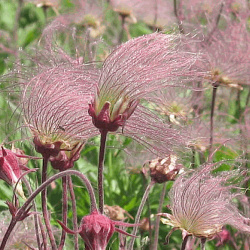 Prairie Smoke Seeds
Geum triflorum
Feathery, pink wisps float atop these dreamy native flowers, like so many plumes of smoke. This small novelty plant will add ornamental value to rock gardens or borders, and interest and diversity to any native planting.Quick View$3.96 Pkt - $280.00 / Oz
Prairie Smoke Seeds
Geum triflorum
Feathery, pink wisps float atop these dreamy native flowers, like so many plumes of smoke. This small novelty plant will add ornamental value to rock gardens or borders, and interest and diversity to any native planting.Quick View$3.96 Pkt - $280.00 / Oz -
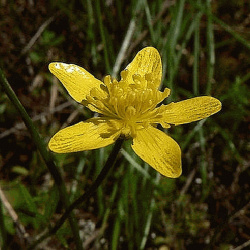 Out Of Stock
Western Buttercup Seeds
Ranunculus occidentalis
These cheery blossoms carry the news that spring has arrived to the residents of the Pacific Northwest. Like most Buttercups, it displays five shiny petals in each flower. This perennial can be grown in gardens everywhere that need a sign that spring is near.Quick Viewx
Out Of Stock
Western Buttercup Seeds
Ranunculus occidentalis
These cheery blossoms carry the news that spring has arrived to the residents of the Pacific Northwest. Like most Buttercups, it displays five shiny petals in each flower. This perennial can be grown in gardens everywhere that need a sign that spring is near.Quick ViewxWestern Buttercup Seeds
Ranunculus occidentalis
These cheery blossoms carry the news that spring has arrived to the residents of the Pacific Northwest. Like most Buttercups, it displays five shiny petals in each flower. This perennial can be grown in gardens everywhere that need a sign that spring is near.
$3.48 Pkt - $17.72 / Oz -
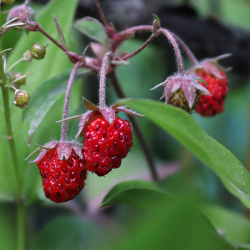 Wild Strawberry Seeds
Fragaria virginiana
Native to the United States, this plant bears tiny, wild strawberries. They are flavorful and sweet, albeit seedier than their cultivated cousins. Great for the homestead garden!Quick View$3.96 Pkt - $400.00 / Oz
Wild Strawberry Seeds
Fragaria virginiana
Native to the United States, this plant bears tiny, wild strawberries. They are flavorful and sweet, albeit seedier than their cultivated cousins. Great for the homestead garden!Quick View$3.96 Pkt - $400.00 / Oz
The wildflower species listed in the California Region are those that would grow well in the Central Valley as well as the coastal areas of Southern California. If you are in the mountains you might want to check out the Mountain Region, or if you are in the desert areas in the south, you'll want to look at the Dry West Region. The species of bulk wildflowers listed on this page are those that are either native here, or are annuals that grow well in this zone. There are hundreds of bulk California wildflower seeds to choose from, so please use the filters along the left side of the screen to narrow your search to match your soils, lighting, and any other attributes that you may want. If you are looking for something that is strictly native to your immediate area, you can check out the distribution map that is found on the detail pages of most of the species.







